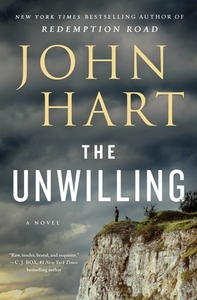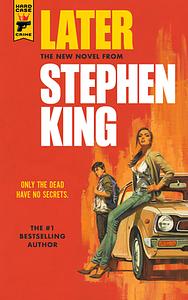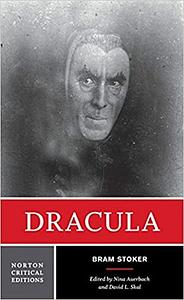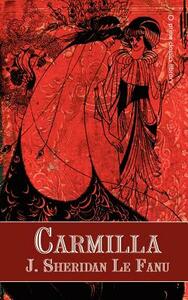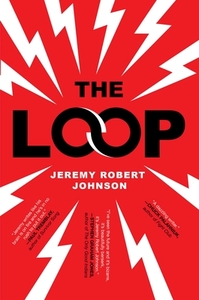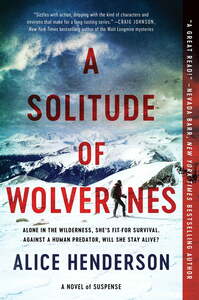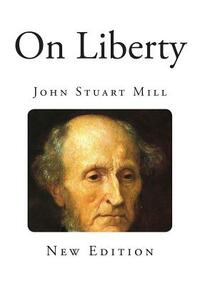Take a photo of a barcode or cover
the_grimm_reader's Reviews (242)
This is the first book I’ve read by John Hart, and it was a quality read. I plan to read more of his works.
The book is set in 1972 and placed squarely in the lingering depressive cloud of a family dealing with the very real pain and loss so many experienced during the Vietnam era. The book is a crime drama, no doubt, but the realistic and often tender interplay between family and friends is the real engine that carries this tale along.
The characters in this book would have been my father and mother’s generation, as well as my grand parents. In many ways, it helped me understand my own father’s penchant for aggression and comfort with violent altercations. As a Vietnam era Marine, many have shared that he was a changed man when he returned, still young but no longer a boy. Many of the descriptions of Jason French (one of our protagonists) carried me into imagination exercises of my Daddy at Jason’s age.
The cast of characters felt fleshed out and real, and the sweeter moments between them were fresh and comforting, especially when propped against the backdrop of the War and most gruesome and cruel cast of villains. The alpha-villain in this story has echoes of Lector in regard to his proper and polite nature, as well as his long-plan intelligence. Still, he was unique from Lector in that there was a Tyler Durdin-level physical threat in his presence. He was a surprise that I did not expect when reading the synopsis of this book.
As a father, I could very much relate to Detective French, the embattled and weary patriarch. His troubled mind and heart felt authentic and I often pitied him as I too have experienced the contradicting feelings of raising troubled and hurting children. There is no clear path or good choice for Detective French, and that felt very real to me.
This book has a large ensemble of entangled characters with histories all their own. Hart masterfully presents the characters, breathing each to life with enough detail to see them in the unique homes and families that shape them, while placing the right amount of additional texture on the primary protagonists (there are several).
Ultimately, for all of the death, deceit, and violence, this is ultimately a story of love, regret, trust, and healing during as low-hanging clouds of an ugly, prolonged war blanket the United States.
I’d recommend this to anyone that is a fan of crime and history.
The book is set in 1972 and placed squarely in the lingering depressive cloud of a family dealing with the very real pain and loss so many experienced during the Vietnam era. The book is a crime drama, no doubt, but the realistic and often tender interplay between family and friends is the real engine that carries this tale along.
The characters in this book would have been my father and mother’s generation, as well as my grand parents. In many ways, it helped me understand my own father’s penchant for aggression and comfort with violent altercations. As a Vietnam era Marine, many have shared that he was a changed man when he returned, still young but no longer a boy. Many of the descriptions of Jason French (one of our protagonists) carried me into imagination exercises of my Daddy at Jason’s age.
The cast of characters felt fleshed out and real, and the sweeter moments between them were fresh and comforting, especially when propped against the backdrop of the War and most gruesome and cruel cast of villains. The alpha-villain in this story has echoes of Lector in regard to his proper and polite nature, as well as his long-plan intelligence. Still, he was unique from Lector in that there was a Tyler Durdin-level physical threat in his presence. He was a surprise that I did not expect when reading the synopsis of this book.
As a father, I could very much relate to Detective French, the embattled and weary patriarch. His troubled mind and heart felt authentic and I often pitied him as I too have experienced the contradicting feelings of raising troubled and hurting children. There is no clear path or good choice for Detective French, and that felt very real to me.
This book has a large ensemble of entangled characters with histories all their own. Hart masterfully presents the characters, breathing each to life with enough detail to see them in the unique homes and families that shape them, while placing the right amount of additional texture on the primary protagonists (there are several).
Ultimately, for all of the death, deceit, and violence, this is ultimately a story of love, regret, trust, and healing during as low-hanging clouds of an ugly, prolonged war blanket the United States.
I’d recommend this to anyone that is a fan of crime and history.
Folks pick up books for a variety of reasons (at least, I do). I switch genres regularly, using each book as a palette cleanser of sorts, prepping me to either learn or be entertained. Through that lens, I’m giving “Later” 5-stars. It’s a solid Stephen King read that dovetails firmly into what many call the Stephen King universe. Was it fun? Yes. Thrilling? Absolutely. Terrifying? Certainly—some of the visuals described fit the classic King patterns—it’s disgusting and horrifying, allowing a graphic imagination to fire off and paint some creative (and gross) visuals. All-in-all, “Later” was time well spent in the trade paperback crime novel world painted with the supernatural brush that Stephen King wields so well. If you like crime and horror and want to have an entertaining read then I’d highly recommend “Later.”
First, I am no student of classic literature—I simply like to read. Dracula seemed to be important, so I thought I’d give it a go—I am glad I did. Why 5-stars? Well, because I enjoyed the experience of reading the book.
There were times when I felt myself being critical, but it didn’t take long for me to shake that off and come to my own understanding that I have a modern mind and the gift (or curse) of some working historical context. By today’s standards there are many irritating things that take place in the book, especially the very long and deeply sincere opining on the value of men (as men) and women (as women). Some things were outright ridiculous, such as the backhanded compliment (to an intelligent woman) that she had a “man brain.” Yeesh! Still, these quibbles aside, I enjoyed the journey overall.
I found some very interesting origins to so many modern science fiction and horror tales that surely drew on Stoker’s pinnacle work. I don’t like comparing books to movies or TV, but I am somewhat happy to have enjoyed the show “Penny Dreadful,” as the overall tone and format of the series helped fill in the visual gaps as I read the journals in Dracula.
Ah, yes! This tale is told entirely through journal and diary entries, including some ship logs, as well as newspaper articles. If this is a well used technique then I am ignorant to it—I’d never read anything quite like it.
I will say that I enjoyed the dread and unsettling fear that seemed to saturate the early pages of the book over the middle acts—I could feel Dracula’s presence reaching out through the pages, and my imagination came alive with Harker’s terror in the castle. I had hoped for more of that throughout, but the mystery and hunt for Dracula did slow things down a bit. Dracula is more of a presence throughout, and the protagonists and victims really deal with the effects of his coming to England more than they do with the Count directly.
I have been a fan of the series “Supernatural” since its inception, and as they are hunters of creatures of the night (not unlike the men of Dracula) and their last name is “Winchester” (the weapon of choice for Dracula’s pursuers) I got a little fanboy smile at the nod.
This book may not be for every reader, but I feel good about making the choice.
There were times when I felt myself being critical, but it didn’t take long for me to shake that off and come to my own understanding that I have a modern mind and the gift (or curse) of some working historical context. By today’s standards there are many irritating things that take place in the book, especially the very long and deeply sincere opining on the value of men (as men) and women (as women). Some things were outright ridiculous, such as the backhanded compliment (to an intelligent woman) that she had a “man brain.” Yeesh! Still, these quibbles aside, I enjoyed the journey overall.
I found some very interesting origins to so many modern science fiction and horror tales that surely drew on Stoker’s pinnacle work. I don’t like comparing books to movies or TV, but I am somewhat happy to have enjoyed the show “Penny Dreadful,” as the overall tone and format of the series helped fill in the visual gaps as I read the journals in Dracula.
Ah, yes! This tale is told entirely through journal and diary entries, including some ship logs, as well as newspaper articles. If this is a well used technique then I am ignorant to it—I’d never read anything quite like it.
I will say that I enjoyed the dread and unsettling fear that seemed to saturate the early pages of the book over the middle acts—I could feel Dracula’s presence reaching out through the pages, and my imagination came alive with Harker’s terror in the castle. I had hoped for more of that throughout, but the mystery and hunt for Dracula did slow things down a bit. Dracula is more of a presence throughout, and the protagonists and victims really deal with the effects of his coming to England more than they do with the Count directly.
I have been a fan of the series “Supernatural” since its inception, and as they are hunters of creatures of the night (not unlike the men of Dracula) and their last name is “Winchester” (the weapon of choice for Dracula’s pursuers) I got a little fanboy smile at the nod.
This book may not be for every reader, but I feel good about making the choice.
Not long ago completing Dracula, I was drawn to this earlier work of vampiric seduction, Carmilla. I have come to enjoy gothic horror more than I’d thought I would, in both film and prose, and Carmilla certainly did not disappoint.
As is typical, reading these older works with a modern mind tends to put one in the role of a historically informed observer, as the characters simply do not have the troves of vampire entertainment and lore through which to inform their experiences. Hence, they are prey, hunted, victims and we the modern readers are left to mentally implore them to slay the vampire immediately, a luxury of being in the informed audience.
I actually love this experience as much as I enjoy a good mystery—it quite reminds me, oddly enough, of the way I felt watching sequels of slasher films in the 80s once the characters had been established. We understood the threat of the killer, their quirks, their strengths, their typical targets, and we were left screaming at the utter stupidity of the potential victims—it was a lot of fun, and I draw a similarity to my experience in reading Carmilla.
Many have drawn attention to the homoerotic overtones of this gothic vampiric tale, but I made little of it. I do no wish to diminish this novella’s role in forwarding the somewhat bisexual trappings present in vampire fantasy, but had I not been presented with the idea ahead of time, it may have been lost on me that Carmilla’s lesbian nature was considered overt.
She seemed an expert vampiric predator, simple enough, that used the advantage of her perma-young, beautiful, and sweet presentation, combined with deceptive handlers, and a well-practiced strategy, to feed on the peoples of a region for well over a century. Perhaps the homosexual inclinations and curiosities of her victims were used skillfully by the creature, but I did feel I had to look for this narrative to find it, and it was certainly not because I did not want to see it, nor because I possess a proclivity against the idea of it.
Many have shared that this is a novella where one might find the roots to Stoker’s famed novel. There are certainly some similarities between Dracula and Carmilla, however having now read both I would consider them quite unique on their own. If both works drew from the existing and predominant lore regarding revenants, vampire, or nosforatu, then that would explain the perceived overlap.
The size of the novella was just right, and it was a fantastic snack-read to satiate my budding love of gothic terror, hence the 5-star review. If you are a reader of Lovecraft, Poe, Shelly, or Stoker, I would recommend this book.
As is typical, reading these older works with a modern mind tends to put one in the role of a historically informed observer, as the characters simply do not have the troves of vampire entertainment and lore through which to inform their experiences. Hence, they are prey, hunted, victims and we the modern readers are left to mentally implore them to slay the vampire immediately, a luxury of being in the informed audience.
I actually love this experience as much as I enjoy a good mystery—it quite reminds me, oddly enough, of the way I felt watching sequels of slasher films in the 80s once the characters had been established. We understood the threat of the killer, their quirks, their strengths, their typical targets, and we were left screaming at the utter stupidity of the potential victims—it was a lot of fun, and I draw a similarity to my experience in reading Carmilla.
Many have drawn attention to the homoerotic overtones of this gothic vampiric tale, but I made little of it. I do no wish to diminish this novella’s role in forwarding the somewhat bisexual trappings present in vampire fantasy, but had I not been presented with the idea ahead of time, it may have been lost on me that Carmilla’s lesbian nature was considered overt.
She seemed an expert vampiric predator, simple enough, that used the advantage of her perma-young, beautiful, and sweet presentation, combined with deceptive handlers, and a well-practiced strategy, to feed on the peoples of a region for well over a century. Perhaps the homosexual inclinations and curiosities of her victims were used skillfully by the creature, but I did feel I had to look for this narrative to find it, and it was certainly not because I did not want to see it, nor because I possess a proclivity against the idea of it.
Many have shared that this is a novella where one might find the roots to Stoker’s famed novel. There are certainly some similarities between Dracula and Carmilla, however having now read both I would consider them quite unique on their own. If both works drew from the existing and predominant lore regarding revenants, vampire, or nosforatu, then that would explain the perceived overlap.
The size of the novella was just right, and it was a fantastic snack-read to satiate my budding love of gothic terror, hence the 5-star review. If you are a reader of Lovecraft, Poe, Shelly, or Stoker, I would recommend this book.
I first came across Harari through a YouTube interview promoting his recent book, Nexus. In that interview, he spoke about ideas I had never considered and from a perspective far removed from my day-to-day understanding. I was fascinated, so I added Nexus to my reading list. In the process, I discovered Harari’s other works and decided to start with Sapiens, which appeared to be his debut book.
I want to note that there are plenty of reviews that either wholeheartedly praise or harshly critique this work—my aim here is neither to fully support nor to rebuke. I am no expert, but I can tell you that Sapiens was an engaging read from beginning to end. Considering that Harari covers (in 416 pages!) the history of Homo sapiens—spanning roughly 70,000 years—it’s inevitable that some details will be left out.
I rated the book 5 stars, not because I am an authority, but because of the overall experience. There’s a unique electricity that lights up my mind when I encounter new ideas and concepts presented in such a clear, engaging manner. Harari possesses that rare gift. He offers perspectives that, while rooted in the human experience, seem to transcend our usual viewpoint—as if observed from a detached, almost divinely humorous plateau. Some parts of the book were overwhelming, others terrifying or hopeful, yet throughout, Harari infuses his narrative with a tone of warm fascination and whimsy. In my view, adding a pinch of joy to this 70,000-year tale is essential; without it, the weight of history could feel too heavy.
I am truly glad I read this book—it has even inspired me to add two more of Harari’s works to my reading list. I deeply appreciate the way he thinks and writes, and I eagerly look forward to more of what he has to offer.
One aspect worth noting is that Sapiens was originally released in Israel in 2011 and later updated in 2014 for a global audience. This revision seems to have had a significant impact, especially as the narrative approached the modern era. In a short chapter near the end, I sensed that the author might have been limited by the contemporary historical context available to him; had he had access to more hyper-modern events, his perspectives might have shifted. Reading the book in 2025—over a decade since its global release—lends a different spin to some of the discussions in Chapters 18 and 19.
In those chapters, one excerpt stood out to me. It conveyed a sense that Harari was acutely aware of the crossroads at which humanity stands, poised to step into one of several possible futures. Below is that memorable excerpt:
"To satisfy both optimists and pessimist, we may conclude by saying that we are on the threshold of both heaven and hell, moving nervously between the gateway of the one and the anteroom of the other. History has not decided where we will end up, and a string of coincidences might yet send us rolling in either direction."
— Yuval Noah Harari, Sapiens: A Brief History of Humankind
I want to note that there are plenty of reviews that either wholeheartedly praise or harshly critique this work—my aim here is neither to fully support nor to rebuke. I am no expert, but I can tell you that Sapiens was an engaging read from beginning to end. Considering that Harari covers (in 416 pages!) the history of Homo sapiens—spanning roughly 70,000 years—it’s inevitable that some details will be left out.
I rated the book 5 stars, not because I am an authority, but because of the overall experience. There’s a unique electricity that lights up my mind when I encounter new ideas and concepts presented in such a clear, engaging manner. Harari possesses that rare gift. He offers perspectives that, while rooted in the human experience, seem to transcend our usual viewpoint—as if observed from a detached, almost divinely humorous plateau. Some parts of the book were overwhelming, others terrifying or hopeful, yet throughout, Harari infuses his narrative with a tone of warm fascination and whimsy. In my view, adding a pinch of joy to this 70,000-year tale is essential; without it, the weight of history could feel too heavy.
I am truly glad I read this book—it has even inspired me to add two more of Harari’s works to my reading list. I deeply appreciate the way he thinks and writes, and I eagerly look forward to more of what he has to offer.
One aspect worth noting is that Sapiens was originally released in Israel in 2011 and later updated in 2014 for a global audience. This revision seems to have had a significant impact, especially as the narrative approached the modern era. In a short chapter near the end, I sensed that the author might have been limited by the contemporary historical context available to him; had he had access to more hyper-modern events, his perspectives might have shifted. Reading the book in 2025—over a decade since its global release—lends a different spin to some of the discussions in Chapters 18 and 19.
In those chapters, one excerpt stood out to me. It conveyed a sense that Harari was acutely aware of the crossroads at which humanity stands, poised to step into one of several possible futures. Below is that memorable excerpt:
"To satisfy both optimists and pessimist, we may conclude by saying that we are on the threshold of both heaven and hell, moving nervously between the gateway of the one and the anteroom of the other. History has not decided where we will end up, and a string of coincidences might yet send us rolling in either direction."
— Yuval Noah Harari, Sapiens: A Brief History of Humankind
Sometimes, just seeing a familiar face on a book cover can be comforting. I picked this up initially because of Arnold’s recognizable face, and after skimming a few pages, I thought I might gain something from his life experiences.
Arnold writes the way he speaks, making this one of the rare books where I could clearly hear the author’s voice as I read. I laughed out loud a few times and let some of his blunt, no-nonsense wisdom really sink in. It’s easy to view him as just an icon and forget the man behind the legend—the road he’s traveled and the lessons he’s learned. This book gave me the chance to see him in a different light, and it was a real treat to spend time with him in this way.
Growing up, I experienced Arnold through his films—some of my favorite childhood memories. My dad enjoyed his movies, and reading this book brought back fond memories of video stores and movie theaters.
The ending really brought everything home, but I’ll leave that out of this review in case you decide to read it yourself. I will say that I picked up on the Stoic undertones in Arnold’s worldview and advice, and the final short chapter lands in a particularly poignant and personal way.
I’d recommend this book to anyone struggling to find their pace or place in the world.
Arnold writes the way he speaks, making this one of the rare books where I could clearly hear the author’s voice as I read. I laughed out loud a few times and let some of his blunt, no-nonsense wisdom really sink in. It’s easy to view him as just an icon and forget the man behind the legend—the road he’s traveled and the lessons he’s learned. This book gave me the chance to see him in a different light, and it was a real treat to spend time with him in this way.
Growing up, I experienced Arnold through his films—some of my favorite childhood memories. My dad enjoyed his movies, and reading this book brought back fond memories of video stores and movie theaters.
The ending really brought everything home, but I’ll leave that out of this review in case you decide to read it yourself. I will say that I picked up on the Stoic undertones in Arnold’s worldview and advice, and the final short chapter lands in a particularly poignant and personal way.
I’d recommend this book to anyone struggling to find their pace or place in the world.
Short review: This was a fun horror/sci-fi read.
I’d read that it was Stranger Things meets World War Z—okay, I guess I can see that. I hate using shows as comparisons, but I did notice elements of a few that I enjoyed. That said, this book wasn’t Stranger Things or World War Z. Honestly, the biotech creature/virus in this story reminded me more of the blue interstellar virus from The Expanse—not in how it was visually described, but in its eerie, evolving nature. And speaking of visuals, I loved them. My imagination was firing on all cylinders, trying to picture what the author was describing, which made for a really fun reading experience.
Two other works that came to mind while reading were The Crazies and 30 Days of Night—both of which I love—so I consider this book a win in that regard. Interestingly, many of the things other reviewers disliked are what I actually enjoyed. It’s gross. It’s packed with gore and body horror. The author has a real knack for it, and I was here for it. If you’re not a fan of extreme horror in film, you might not enjoy it in book form either, which I totally get. But personally, I kept thinking how great it would be to see these scenes brought to life on screen.
Our primary protagonist, Lucy, is an interesting teenage heroine. She’s flawed, not the typical choice for a final girl (was she even a final girl?—not sure about that designation). Her arc is wild, and yeah, she has a little plot armor, but whatever—it’s expected, and it kept things exciting.
For reviewers who gave up halfway, I think you missed out. Maybe this hybrid genre just isn’t your thing. But I liked it. Wild read—wild ride. Had fun.
I’d read that it was Stranger Things meets World War Z—okay, I guess I can see that. I hate using shows as comparisons, but I did notice elements of a few that I enjoyed. That said, this book wasn’t Stranger Things or World War Z. Honestly, the biotech creature/virus in this story reminded me more of the blue interstellar virus from The Expanse—not in how it was visually described, but in its eerie, evolving nature. And speaking of visuals, I loved them. My imagination was firing on all cylinders, trying to picture what the author was describing, which made for a really fun reading experience.
Two other works that came to mind while reading were The Crazies and 30 Days of Night—both of which I love—so I consider this book a win in that regard. Interestingly, many of the things other reviewers disliked are what I actually enjoyed. It’s gross. It’s packed with gore and body horror. The author has a real knack for it, and I was here for it. If you’re not a fan of extreme horror in film, you might not enjoy it in book form either, which I totally get. But personally, I kept thinking how great it would be to see these scenes brought to life on screen.
Our primary protagonist, Lucy, is an interesting teenage heroine. She’s flawed, not the typical choice for a final girl (was she even a final girl?—not sure about that designation). Her arc is wild, and yeah, she has a little plot armor, but whatever—it’s expected, and it kept things exciting.
For reviewers who gave up halfway, I think you missed out. Maybe this hybrid genre just isn’t your thing. But I liked it. Wild read—wild ride. Had fun.
This book hit several high notes for me. I love spending hours alone in the outdoors—the farther from cities and crowds, the better—observing nature and watching creatures, great and small, over time. Beyond that, I’m always drawn to a good thriller or mystery featuring a confident, intelligent, and good-hearted protagonist. And if there’s a whip-crack of action in the final act? Even better.
A Solitude of Wolverines was my favorite kind of page-turner from the very first chapter. Our heroine, Alex Carter, is immediately likable and reliable—someone I’d genuinely want to know. I found myself invested in her from the start, fully on board with her passion for preserving wild spaces and protecting the endangered creatures that inhabit them.
Beneath Alex’s professional mission lies a greed-driven horror that seamlessly weaves into the story, challenging her resolve at every turn. She’s sturdy, intelligent, and fearless in facing it head-on. There’s also an intriguing layer of mystery with hints of military/special operator elements (perhaps?), which left me both curious and eager to learn more.
As I read, I kept hoping I’d get to spend more time with this character—and I was thrilled to discover that there are (as of this review) two more books in the Alex Carter series. If you love the outdoors and thrillers, you can’t go wrong with this one.
One final note: I found this book at a discount overstock store for about four dollars—the cover and title caught my eye, and the synopsis piqued my interest. I love when I stumble upon a hidden gem like this. Needless to say, I’ve already ordered the next two books in the series.
A Solitude of Wolverines was my favorite kind of page-turner from the very first chapter. Our heroine, Alex Carter, is immediately likable and reliable—someone I’d genuinely want to know. I found myself invested in her from the start, fully on board with her passion for preserving wild spaces and protecting the endangered creatures that inhabit them.
Beneath Alex’s professional mission lies a greed-driven horror that seamlessly weaves into the story, challenging her resolve at every turn. She’s sturdy, intelligent, and fearless in facing it head-on. There’s also an intriguing layer of mystery with hints of military/special operator elements (perhaps?), which left me both curious and eager to learn more.
As I read, I kept hoping I’d get to spend more time with this character—and I was thrilled to discover that there are (as of this review) two more books in the Alex Carter series. If you love the outdoors and thrillers, you can’t go wrong with this one.
One final note: I found this book at a discount overstock store for about four dollars—the cover and title caught my eye, and the synopsis piqued my interest. I love when I stumble upon a hidden gem like this. Needless to say, I’ve already ordered the next two books in the series.
I have to be honest—The Buffalo Hunter Hunter is the first book I’ve read by Stephen Graham Jones, and if this is any indication of what I’ve been missing, then I can’t wait to dive into more of his work. Last year, I picked up My Heart Is a Chainsaw at my local bookstore, but like most readers, my TBR list is ever-growing. Still, as a Goodreads user, I followed Jones on the platform and got a notification when The Buffalo Hunter Hunter was announced.
Some of my favorite pieces of fiction exist in the vampire playground, and I always get excited when someone brings something fresh to the genre. The synopsis for Buffalo Hunter Hunter presented a concept I’d never considered before, so I had high hopes that it would break new ground. When my local bookstore received three early copies last week, I immediately grabbed one and tore right in—finishing the last blood-soaked page last night.
It exceeded every expectation.
For any connoisseur of fine vampire fiction, the book offers plenty of winks and nods to classic works and lore, a strong indication that Jones himself is a fan of these ancient, dreaded predators. My first thought was, Is this Jones' Dracula? That idea was quickly shattered and consumed by the ink-stained pages. Then I wondered, Is this his Interview With the Vampire? Again, that ceiling was obliterated chapter after chapter.
This is a work of historical fiction, both horrifying and tragic. It begins in a time and place that feels familiar before pulling us back into the past through a fragile, hidden journal—one that recounts, in gory detail, the tale of our creature: the Blackfoot Indian Good Stab (who takes on many names throughout the novel). Good Stab is a complex character. There were moments I wanted to save him, and others when I wanted to run from him—but either way, I was absolutely captivated by his story.
The characters in The Buffalo Hunter Hunter have distinct voices, especially Good Stab. At first, I found myself struggling to adjust to his cadence and phrasing, but I came to believe this was intentional. Later in the book, Good Stab himself makes an observation that is reinforced by another character—we, as readers, are not meant to fully own his words in our mouths. We are meant to struggle with them.
For fans of graphic horror, body horror, and gore, this book is a feast. It’s not gratuitous or blood-for-blood’s-sake—every visceral moment is deeply tied to the story. If you enjoy films like Cronenberg’s The Fly or the recent The Substance, I think you’ll appreciate the way Jones handles horror here. He reinvents vampire mythology in ways I’ve never encountered before, introducing gifts (or curses) that sparked my imagination, especially regarding the amorphous, shifting forms the creature takes throughout the novel.
Beyond the supernatural horror, the book also sheds light on a real-world horror: the calculated slaughter of the buffalo, a cruel and despicable weapon of genocide used against the First Peoples of this continent. It’s a shameful part of history that should never be forgotten, and I feel that Jones does it justice while weaving his own original and haunting tale.
As I neared the last fifty pages, I found myself wondering how Jones would land this story. I couldn’t have predicted the final pages on my best day. He took this tragic and fantastical tale to an even wilder place, leaving me grinning—maybe even baring a sharp-toothed smile like Good Stab himself. I didn’t want it to end. But end it did—and it stuck the landing.
Now, I’m craving more. The Angel of Indian Lake trilogy is next.
One last note—the book itself is stunning. His publisher absolutely knocked it out of the park. If you can get your hands on the hardcover, do it. The cover art is striking, with a mix of satin finishing and high-gloss accents on the title. The edges of the pages are blood red (I think they call it "marbling"), and it really pops. If you love the feel of a beautifully designed book in your hands, get to your local bookstore and grab one while you can—then sink your fangs in deep.
Some of my favorite pieces of fiction exist in the vampire playground, and I always get excited when someone brings something fresh to the genre. The synopsis for Buffalo Hunter Hunter presented a concept I’d never considered before, so I had high hopes that it would break new ground. When my local bookstore received three early copies last week, I immediately grabbed one and tore right in—finishing the last blood-soaked page last night.
It exceeded every expectation.
For any connoisseur of fine vampire fiction, the book offers plenty of winks and nods to classic works and lore, a strong indication that Jones himself is a fan of these ancient, dreaded predators. My first thought was, Is this Jones' Dracula? That idea was quickly shattered and consumed by the ink-stained pages. Then I wondered, Is this his Interview With the Vampire? Again, that ceiling was obliterated chapter after chapter.
This is a work of historical fiction, both horrifying and tragic. It begins in a time and place that feels familiar before pulling us back into the past through a fragile, hidden journal—one that recounts, in gory detail, the tale of our creature: the Blackfoot Indian Good Stab (who takes on many names throughout the novel). Good Stab is a complex character. There were moments I wanted to save him, and others when I wanted to run from him—but either way, I was absolutely captivated by his story.
The characters in The Buffalo Hunter Hunter have distinct voices, especially Good Stab. At first, I found myself struggling to adjust to his cadence and phrasing, but I came to believe this was intentional. Later in the book, Good Stab himself makes an observation that is reinforced by another character—we, as readers, are not meant to fully own his words in our mouths. We are meant to struggle with them.
For fans of graphic horror, body horror, and gore, this book is a feast. It’s not gratuitous or blood-for-blood’s-sake—every visceral moment is deeply tied to the story. If you enjoy films like Cronenberg’s The Fly or the recent The Substance, I think you’ll appreciate the way Jones handles horror here. He reinvents vampire mythology in ways I’ve never encountered before, introducing gifts (or curses) that sparked my imagination, especially regarding the amorphous, shifting forms the creature takes throughout the novel.
Beyond the supernatural horror, the book also sheds light on a real-world horror: the calculated slaughter of the buffalo, a cruel and despicable weapon of genocide used against the First Peoples of this continent. It’s a shameful part of history that should never be forgotten, and I feel that Jones does it justice while weaving his own original and haunting tale.
As I neared the last fifty pages, I found myself wondering how Jones would land this story. I couldn’t have predicted the final pages on my best day. He took this tragic and fantastical tale to an even wilder place, leaving me grinning—maybe even baring a sharp-toothed smile like Good Stab himself. I didn’t want it to end. But end it did—and it stuck the landing.
Now, I’m craving more. The Angel of Indian Lake trilogy is next.
One last note—the book itself is stunning. His publisher absolutely knocked it out of the park. If you can get your hands on the hardcover, do it. The cover art is striking, with a mix of satin finishing and high-gloss accents on the title. The edges of the pages are blood red (I think they call it "marbling"), and it really pops. If you love the feel of a beautifully designed book in your hands, get to your local bookstore and grab one while you can—then sink your fangs in deep.
Where to begin with this review?
First and foremost, On Liberty is not a lightweight read. It demands your full attention and every ounce of comprehension you can muster. Mill pushes deeper into the philosophy of personal liberty—and the tension between the free, autonomous individual and their place within society—than anything I’ve previously encountered.
This essay challenged me in ways I didn’t expect. It prompted me to consider perspectives I’d never taken the time to engage with, and, more than once, I found myself feeling ashamed. Mill holds up a mirror to the reader, and I saw reflected in it the micro-tyrannies that quietly reside in my own thinking. It was uncomfortable, but necessary.
I’d like to think this work would have had a profound effect on me had I been exposed to it at a younger age—maybe in grade school. But if I’m being honest, it’s a dense and heady piece of philosophy, and my adolescent mind might not have been fertile ground for its ideas. Still, I can’t help but wish that some portion of Mill’s thinking could be distilled into a digestible form and shared with young people today.
In an age where the slow creep of authoritarianism—yes, even tyrannicide—seems to be gathering speed, it would be good for the next generation to understand the value of personal liberty. Not just in theory, but as a principle worth standing for. Worth defending. Not just for ourselves, but for others, even those we may disagree with.
Mill’s On Liberty dovetails beautifully with the ideals found in the founding documents and letters of the American Revolution and Constitution. It is my hope that his work finds new life in our time and inspires a fresh, fiery fervor for liberty—an idea that seems increasingly treated as a novelty while so many of my countrymen inch toward authoritarian adoration and boot-licking complacency.
I was raised with the belief that liberty is a treasure. That in a free society, we must protect it—especially when it's challenged. Liberty, even (and especially) for our foes.
These ideas—presented with such clarity, elegance, and force by John Stuart Mill—are not just philosophical musings. They are foundational. They are essential. And they are paramount to the survival of any democratic constitutional republic. On Liberty should not be left on dusty shelves or reduced to a passing reference in academic circles. It should be elevated, embraced, and taught with the urgency it deserves.
Because liberty, once lost, is not easily reclaimed.
First and foremost, On Liberty is not a lightweight read. It demands your full attention and every ounce of comprehension you can muster. Mill pushes deeper into the philosophy of personal liberty—and the tension between the free, autonomous individual and their place within society—than anything I’ve previously encountered.
This essay challenged me in ways I didn’t expect. It prompted me to consider perspectives I’d never taken the time to engage with, and, more than once, I found myself feeling ashamed. Mill holds up a mirror to the reader, and I saw reflected in it the micro-tyrannies that quietly reside in my own thinking. It was uncomfortable, but necessary.
I’d like to think this work would have had a profound effect on me had I been exposed to it at a younger age—maybe in grade school. But if I’m being honest, it’s a dense and heady piece of philosophy, and my adolescent mind might not have been fertile ground for its ideas. Still, I can’t help but wish that some portion of Mill’s thinking could be distilled into a digestible form and shared with young people today.
In an age where the slow creep of authoritarianism—yes, even tyrannicide—seems to be gathering speed, it would be good for the next generation to understand the value of personal liberty. Not just in theory, but as a principle worth standing for. Worth defending. Not just for ourselves, but for others, even those we may disagree with.
Mill’s On Liberty dovetails beautifully with the ideals found in the founding documents and letters of the American Revolution and Constitution. It is my hope that his work finds new life in our time and inspires a fresh, fiery fervor for liberty—an idea that seems increasingly treated as a novelty while so many of my countrymen inch toward authoritarian adoration and boot-licking complacency.
I was raised with the belief that liberty is a treasure. That in a free society, we must protect it—especially when it's challenged. Liberty, even (and especially) for our foes.
These ideas—presented with such clarity, elegance, and force by John Stuart Mill—are not just philosophical musings. They are foundational. They are essential. And they are paramount to the survival of any democratic constitutional republic. On Liberty should not be left on dusty shelves or reduced to a passing reference in academic circles. It should be elevated, embraced, and taught with the urgency it deserves.
Because liberty, once lost, is not easily reclaimed.
